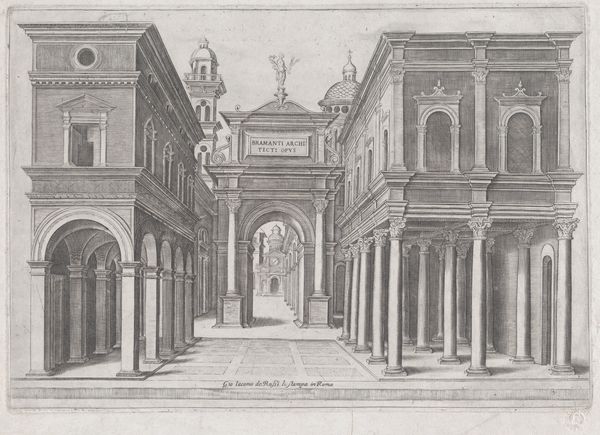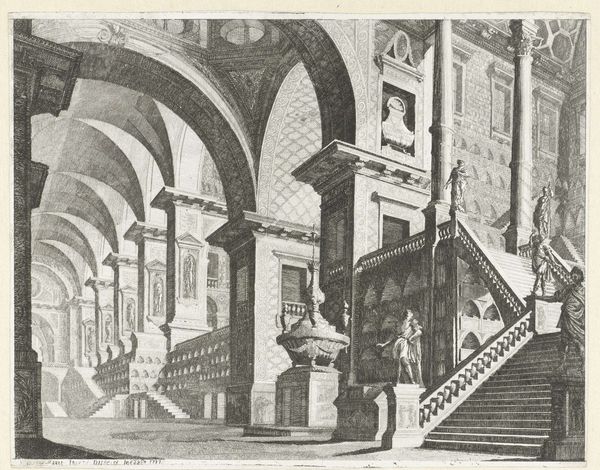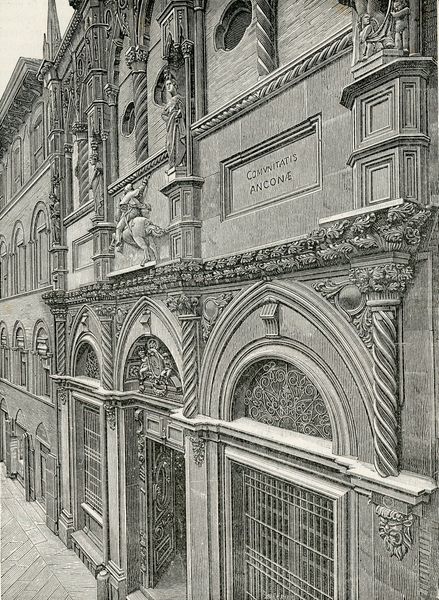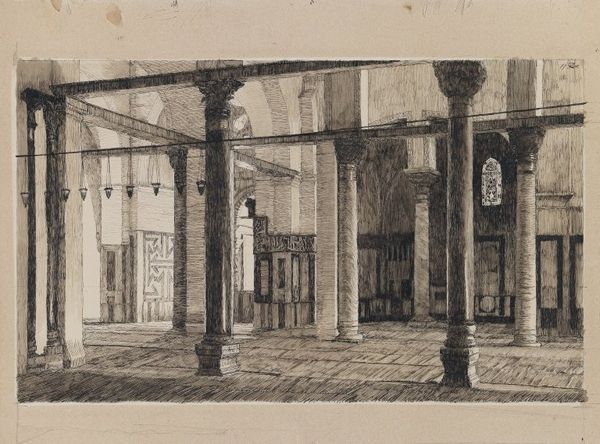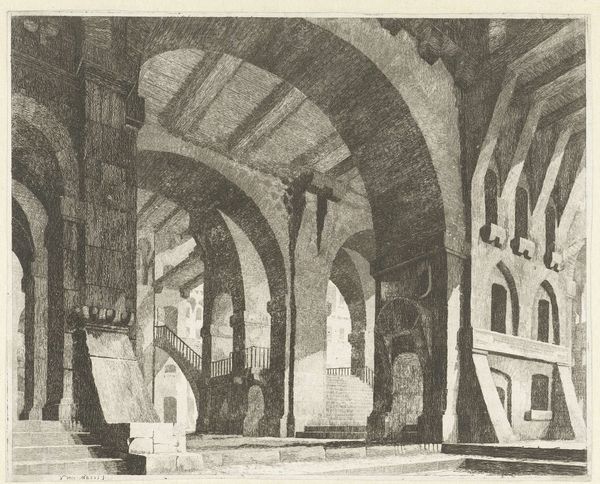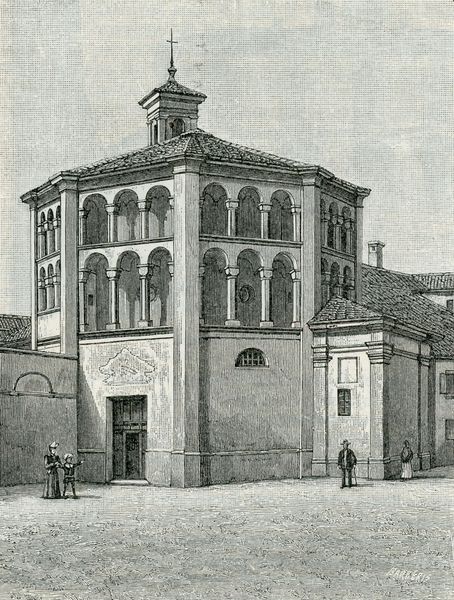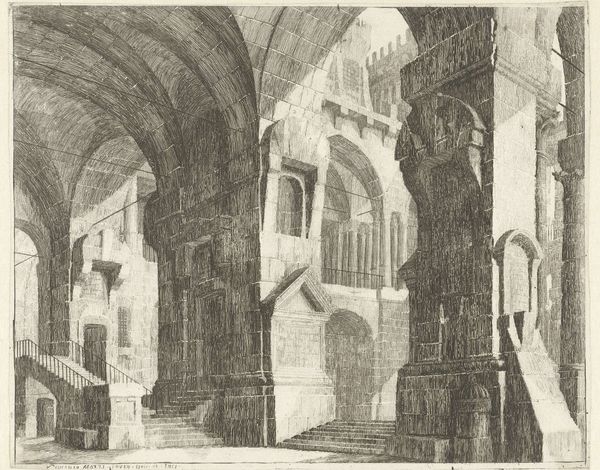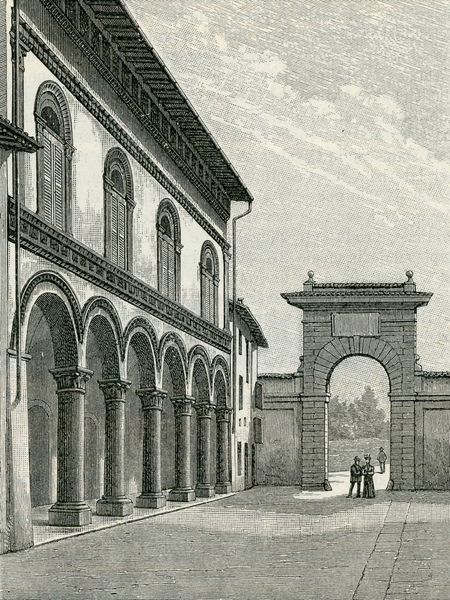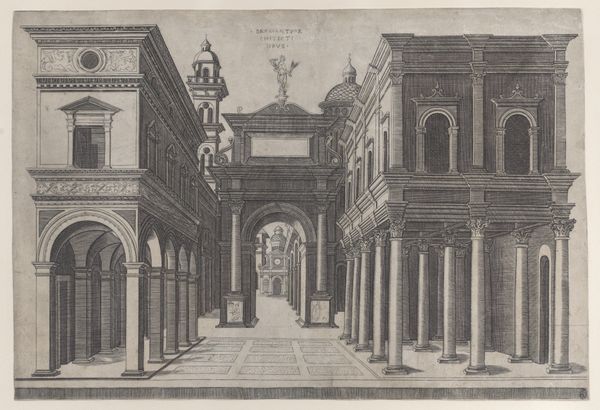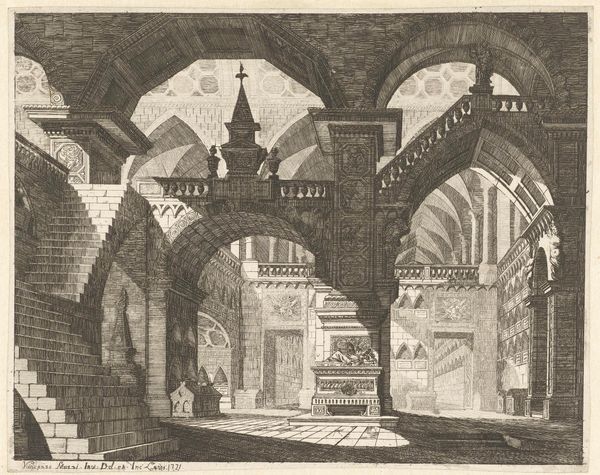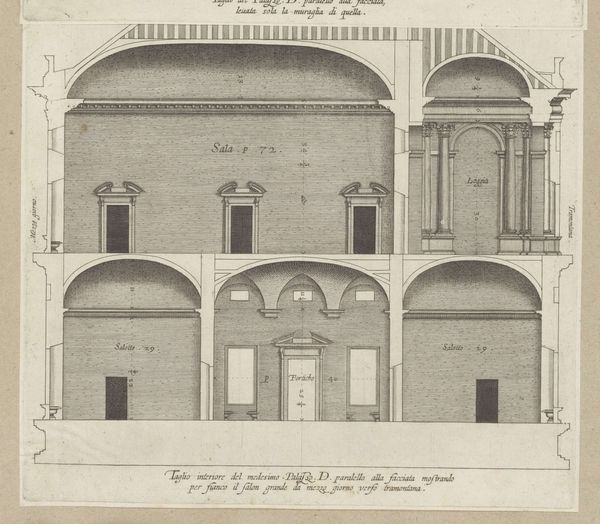
drawing, paper, ink, pencil, architecture
#
drawing
#
pencil sketch
#
paper
#
ink
#
pencil
#
architectural drawing
#
cityscape
#
italian-renaissance
#
architecture
#
realism
Copyright: Public domain
Curator: We’re looking at "Portico Di San Francesco," an 1898 drawing by Giuseppe Barberis. It's rendered with pencil and ink on paper, a cityscape that pulls you right in. What are your first impressions? Editor: Somber, isn't it? A quiet melancholy. The high contrast and sharp lines make the architecture feel almost… spectral. It’s as if we're viewing a ghost of a city. Curator: Spectral is a perfect word! Barberis uses realism to create something almost unreal. The perspective, meticulously rendered, creates depth but the lack of figures leaves an uncanny emptiness. Did you notice the repetition of architectural components: arches, columns, pilasters all lined up like phantom soldiers. Editor: Indeed, the portico acts as a visual echo, but more than this—notice how each component embodies both permanence and transience: solid stone etched with subtle nuances that almost anticipate decay. And, although grounded by its detailed portrayal, there's something ephemeral about the shadows suggesting change that almost borders on an elegy. Curator: Absolutely. The choice of medium is interesting. Ink and pencil offer a precision that perhaps oils wouldn’t. It mirrors the architectural exactness of the Italian Renaissance—that yearning for order. But the hand of the artist— the slight tremors in the lines —introduce human imperfection. It adds a fragility. Do you find it beautiful? Editor: Beauty resides not merely in flawless lines but, in the imperfection that implies presence. I appreciate how this drawing marries rationality and emotional nuance, revealing how much architectural design mirrors aspects of human intellect, emotion, and being. Curator: I find the drawing beautiful for the same reasons you stated; the tension between the mathematical precision of Renaissance architecture and the slight but expressive tremor of the artist's hand makes this work beautiful and profound. It whispers of time, change and the beauty inherent to that transformation. Editor: A fitting testament to what survives. Thanks for illuminating Giuseppe Barberis and this understated glimpse into time’s patient art.
Comments
No comments
Be the first to comment and join the conversation on the ultimate creative platform.

